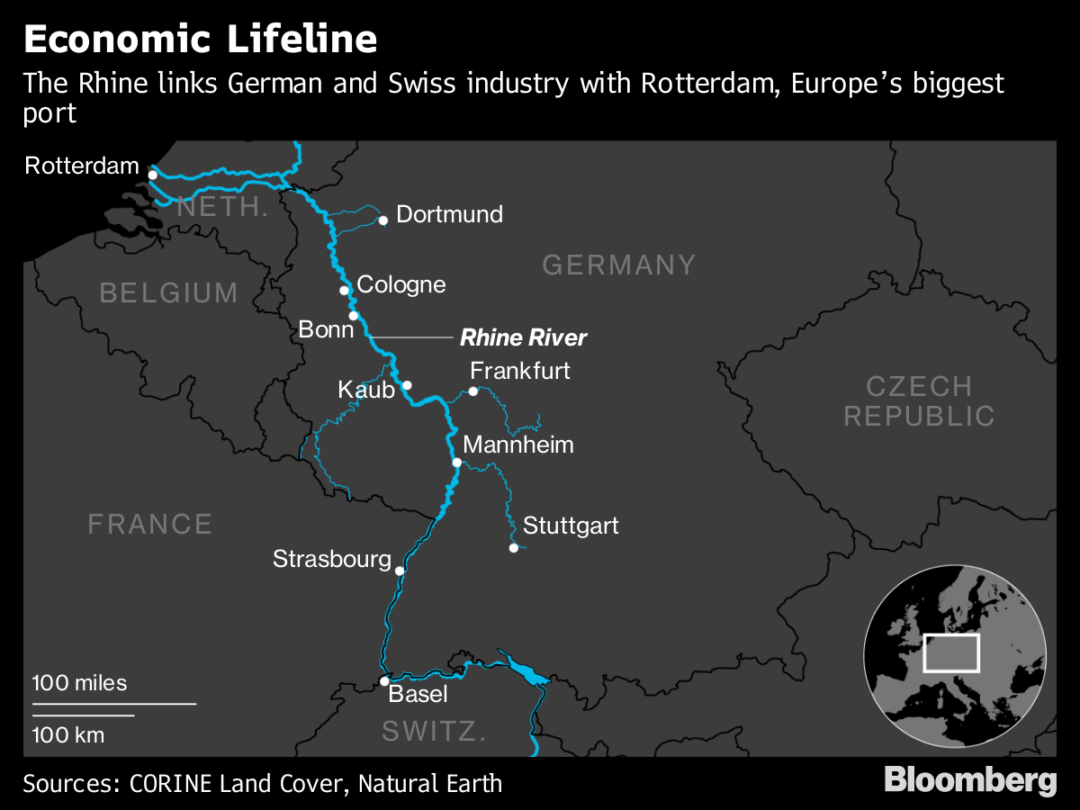
Visit Our Sponsors |
|
|
|
|
|
|
|
|
|
|
|
|
|
|
|
|
|
|
|
|
|
|
|
|
|
|
|
|
|
|
|
|
|
|
|
|
|
|
|
|
|
|
|
|
|
|
|
|
|
|
|
|
|
|
|
|
|
|
|
|
|
|
|
|
|
|

Kevin Kilps’s car ferry churns the waters of Germany’s Rhine river as he steers toward the bank opposite Kaub, a scenic village just south of the rocky outcropping named after the legendary siren Lorelei.
It’s typically a busy stretch of waterway. On a normal day, the commuter ferry vies for space with cargo barges shuttling supplies to factories in the south and German goods to ports on the North Sea as well as tourist boats heading for nearby medieval castles and vineyards.
After a prolonged summer drought, the bustling traffic at one of the shallowest points on the Rhine ground to a halt for nearly a month late last year, choking off a critical transport artery. The impact damped Germany’s industrial machine, slowing economic growth in the third and fourth quarters. It was the latest sign of how even advanced industrial economies are increasingly fighting the effects of global warming.
“You can see the water levels are lower each year,” said Kilps, who added extra flotation equipment to the 150-ton boat during the stoppage to enable it to finally cross the river again. “It’s scary to watch the climate changing.”
With its source high in the Swiss Alps, the Rhine snakes 800 miles through the industrial zones of Switzerland, Germany and the Netherlands before emptying into the sea at Rotterdam, Europe’s busiest port. It serves as a key conduit for manufacturers such as Daimler AG, Robert Bosch GmbH and Bayer AG.
When low water halted shipping this summer, steelmaker Thyssenkrupp AG was forced to delay shipments to customers like automaker Volkswagen AG as it couldn’t get raw materials to a mill in Duisburg.
Constraints on the Rhine cost BASF SE around 250m euros ($285m) by pushing the chemical maker to use more expensive transport options. In a recent newspaper interview, BASF Chief Executive Officer Martin Brudermueller called for major infrastructure investments such as locks and dams that can release water to ensure shipping lanes remain open. But dredging and other major engineering work would be difficult, given the area around Kaub is a UNESCO World Heritage site.
“We have already seen effects on national economic growth,” said Oliver Rakau, chief German economist at Oxford Economics. “The problem is related to global warming and can happen again.”
The river is fed by glaciers and rain. But alpine ice flows shrank 28 percent between 1973 and 2010 — the date of the most recent in-depth study by the Swiss government — and that decline may be as much as 35 percent now, according to Wilfried Hagg, glacier expert at Munich University.
“The Alps are warming at an even faster rate as snow and ice melts,” Hagg said. “A warming climate means that incidents like the low river levels this summer are more likely to occur.”
Water depths, which hit 12-year lows at Kaub for most of the second half of 2018, hobbled barge flows for months. The boats, which typically haul more than 18,000 barrels of diesel each, were prevented from loading at full capacity until late December, and fluctuating water levels continued to affect cargo activity in January, according to Riverlake Barging, a Rotterdam-based broker.
Fuel pumps at some gas stations in Baden-Wuerttemberg ran dry this summer because of supply problems, which led to the release of emergency stockpiles in Switzerland and Germany. Natural gas prices in Europe jumped 13 percent in November, when utilities boosted output at gas-fired generators as they struggled to get supplies for coal plants.
Even with Germany’s extensive road and train networks, the Rhine is hard to beat. Barges can carry more than five times their own weight, making them cheap to operate. Shipping from Rotterdam to Basel costs around 40 percent less than rail transport, according to the German Federal Institute of Hydrology.
To thwart future transport-related disruptions to the economy, Chancellor Angela Merkel’s government is mulling measures such as permanently easing Sunday restrictions on truck traffic in Rhine states, lightening loads on barges and improving freight train connections.
In Kaub — known for Pfalzgrafenstein Castle, an imposing former toll station located on a rock in the middle of the Rhine — locals have noted the river’s ever-lower levels and are concerned about what the coming years will bring.
“I think we’re going to have problems much more regularly,” Kilps, a 15-year Rhine veteran, said as cars rolled on to the ferry.
RELATED CONTENT
RELATED VIDEOS
Timely, incisive articles delivered directly to your inbox.






